 In the wake of US newspaper USA Today recently unveiling a new version of their site with more cutting edge ‘new media’ features than any other, I thought it might be a good time to have a look at the challenges posed to newspapers by the onslaught of new media, what they are be doing about it and what they should be doing about it.
In the wake of US newspaper USA Today recently unveiling a new version of their site with more cutting edge ‘new media’ features than any other, I thought it might be a good time to have a look at the challenges posed to newspapers by the onslaught of new media, what they are be doing about it and what they should be doing about it.
The Challenge
Undeniably new media (that is, the general availability of the Internet and the new types of publishing it enables, such as blogs and podcasting) has had a significant negative impact on circulation of newspapers. There are roughly two schools of thought over why this has occurred. The cynics would argue that it is because the ‘old media’ no longer has the trust of the public, and instead people turn to indie publishers, such as bloggers and podcasters, to provide information on what is happening in the world around them. A more moderate viewpoint would be that the Internet has lowered the barrier to entry into the publishing industry to such an extent that anyone and everyone can publish content (the long tail effect), thus inevitably reducing market share of the big players. It would seem that this view is the more sensible.
If newspapers wish to stay relevant therefore, they are forced to innovate in the realm of new media. Their future circulation is at stake, and if they fail to successfully capture market on the web they miss out on potentially millions of pounds worth of advertising a year. Hence the effort the newspapers are putting into finding a way forward.
What are they doing about it?
The biggest, and perhaps most notable addition to the newspaper’s content production is audio visual content (AVC). AVC refers to anything from podcasts to video blogs to video news reports. These are of crucial importance because of the value they provide to the consumer’s experience above and beyond that found in the newspaper.
 The recently relaunched Times Online seems to be taking this the most seriously with the launch of an entire AVC section. They are currently providing over 10 different podcast series, and video content from their Iraqi correspondent and a car review show. Whilst the Times Online is making an admirable effort, my personal favourite newspaper podcasting effort is that of the Comment is Free section of the Guardian Unlimited website. I particularly enjoy their Media Talk podcast, to which I devotedly listen every week.
The recently relaunched Times Online seems to be taking this the most seriously with the launch of an entire AVC section. They are currently providing over 10 different podcast series, and video content from their Iraqi correspondent and a car review show. Whilst the Times Online is making an admirable effort, my personal favourite newspaper podcasting effort is that of the Comment is Free section of the Guardian Unlimited website. I particularly enjoy their Media Talk podcast, to which I devotedly listen every week.
Another noticeable theme is the rise of user generated content (UGC). This is when users add any of their own content to a site, whether by means of a blog comment, uploaded video or anything else. This is an important trend for newspapers to be adopting for two reasons. The first is that users have come to expect the ability to add their thoughts to a story; provision of comments enhances conversation, and thus interest in the story and ‘stickiness’ of the site as users return to read comments in response to their own. The second reason is that UGC is ideal for any business looking to monetise content through advertising because it provides virtually free content, next to which can be placed fee-paying ads.
Almost all the recent newspaper Website relaunches (such as that of the Times and the Telegraph) have the ability to add comments, as well as more the forward-looking Guardian Unlimited, which has had the feature for some time. However, by far the most adventurous in UGC is the recent relaunch of the USA Today site. USA Today is building a fairly robust social network around their content, which allows users to comment, have their own avatar, ‘recommend’ (effectively digg) stories as well as a profile page.
Taking it further
Over time it is clear that the journalist will have to become an expert in all types of media. They will have to be able to easily transition from writing a story for a newspaper to producing a podcast interview to setting up and tweaking an installation of WordPress. Whilst many journalists will be struggling to be as technically proficient as this requires, I believe the necessary skills will develop over time.
The temptation will be for newspapers’ websites to become more and more like a combination between Weblogs, Inc and Digg, with loose editorial control and use of wisdom of the crowds to determine top stories. It is crucial that this is resisted, because to move in this direction would mean that newspapers would lose their unique selling point of quality, carefully edited content.
The challenge, therefore, is for newspapers to continue to innovate without losing sight of why they are important sources of news. If they succeed, they will continue to flourish, otherwise perish.
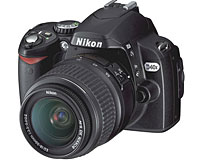 Nikon claim that the battery life has been extended to allow up to 520 images per charge (better than the 470 images for the D40) and can rattle off more photos in continuous shooting mode (3 frames per second compared to 2.5 fps for the D40).
Nikon claim that the battery life has been extended to allow up to 520 images per charge (better than the 470 images for the D40) and can rattle off more photos in continuous shooting mode (3 frames per second compared to 2.5 fps for the D40). In-camera editing tools let snappers adjust compensation, correct red-eye or use monochrome effects to get that Ye Olde Black-and-white or Sepia tone effect.
In-camera editing tools let snappers adjust compensation, correct red-eye or use monochrome effects to get that Ye Olde Black-and-white or Sepia tone effect.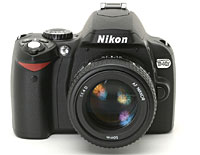 Specifications:
Specifications: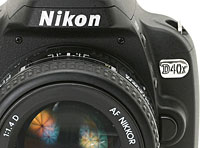 Focus area One of three areas can be selected
Focus area One of three areas can be selected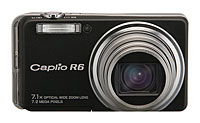 As ever, the camera sports a beast of a 7.1x optical wide zoom lens (28–200 mm in 35 mm camera format) in a slim body measuring a pocketable 20.6 mm at its thinnest point.
As ever, the camera sports a beast of a 7.1x optical wide zoom lens (28–200 mm in 35 mm camera format) in a slim body measuring a pocketable 20.6 mm at its thinnest point.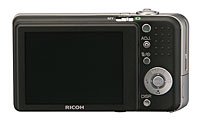 The camera comes with high-resolution, high viewing angle 2.7-inch LCD (up slightly on the R5 LCD), with Ricoh claiming a long 330 shot battery life.
The camera comes with high-resolution, high viewing angle 2.7-inch LCD (up slightly on the R5 LCD), with Ricoh claiming a long 330 shot battery life.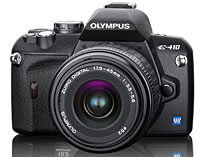 Olympus has announced details of two additions to their dSLR range in the run up to the Photo Marketing Association (PMA) trade show in Las Vegas which starts on the 7th March.
Olympus has announced details of two additions to their dSLR range in the run up to the Photo Marketing Association (PMA) trade show in Las Vegas which starts on the 7th March.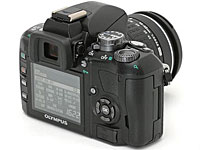 Olympus have also increased the camera’s high sensitivity performance thaks to a new TruePic III processor, backed by improved buffering of continuous frames offering shooting at 3fps with up to seven images in RAW buffer
Olympus have also increased the camera’s high sensitivity performance thaks to a new TruePic III processor, backed by improved buffering of continuous frames offering shooting at 3fps with up to seven images in RAW buffer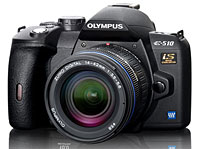 Olympus E-510
Olympus E-510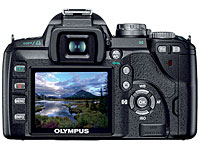 Although not quite as small as it’s younger brother, the camera still measures up at a pleasingly bijou 5.4″ x 3.6″ x 2.7″, making it a great choice for travellers.
Although not quite as small as it’s younger brother, the camera still measures up at a pleasingly bijou 5.4″ x 3.6″ x 2.7″, making it a great choice for travellers.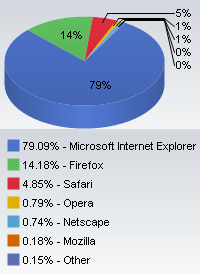 Like hungry puppies with sharp teeth, Mozilla’s Firefox and Apple’s Safari Web browsers continue to chew and gnaw away at the juicy legs of Microsoft’s Internet Explorer (IE).
Like hungry puppies with sharp teeth, Mozilla’s Firefox and Apple’s Safari Web browsers continue to chew and gnaw away at the juicy legs of Microsoft’s Internet Explorer (IE). “After a minor hiccup in January, Firefox seems to be back on the offensive in February,” said the fabulously named Vincent Vizzaccaro, Net Applications’ executive vice president of marketing and strategic relationships.
“After a minor hiccup in January, Firefox seems to be back on the offensive in February,” said the fabulously named Vincent Vizzaccaro, Net Applications’ executive vice president of marketing and strategic relationships.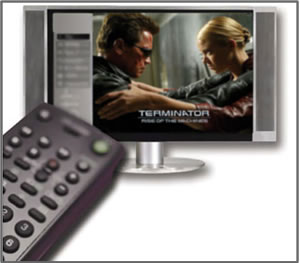 Research house iSupply are predicting that IPTV will be boosting the reveneue generated by the premium video services market from its current level of less than $200Bn to a whopping $277Bn by 2010.
Research house iSupply are predicting that IPTV will be boosting the reveneue generated by the premium video services market from its current level of less than $200Bn to a whopping $277Bn by 2010.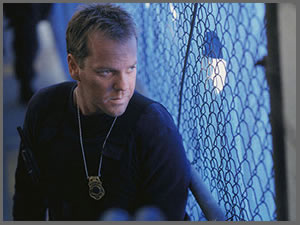 That aside, iSupply see the battle royal between two big, hairy beasts – the current pay-TV world of direct-to-home satellite and digital and analogue cable TV services – and the telcos who will be pushing quad-play.
That aside, iSupply see the battle royal between two big, hairy beasts – the current pay-TV world of direct-to-home satellite and digital and analogue cable TV services – and the telcos who will be pushing quad-play. The full day event, running at the Frontline Club, is billed as “The Strategy, Technology and Business Case for Content Description, Visibility, Search and Discovery.”
The full day event, running at the Frontline Club, is billed as “The Strategy, Technology and Business Case for Content Description, Visibility, Search and Discovery.”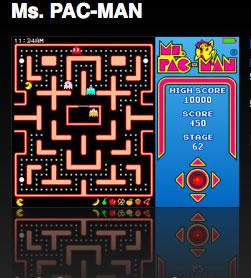 By way of a celebration of the 25th anniversary of the ever-popular Ms Pac-Man video game, Namco are releasing a version of it to run on fifth-generation iPods, made available to punters via the iTunes store.
By way of a celebration of the 25th anniversary of the ever-popular Ms Pac-Man video game, Namco are releasing a version of it to run on fifth-generation iPods, made available to punters via the iTunes store.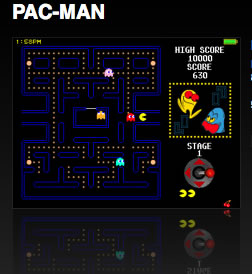 As ever, Wikipedia provides
As ever, Wikipedia provides 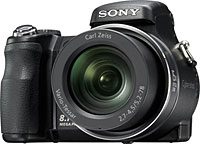 Sony’s new DSC-H7 and DSC-H9 cameras come with an immense 15x optical Carl Zeiss Vario-Tessar zoom, which translates into a whopping 31-465mm range (35mm equiv) – perfect for wannabe paparazzi and lurking stalkers.
Sony’s new DSC-H7 and DSC-H9 cameras come with an immense 15x optical Carl Zeiss Vario-Tessar zoom, which translates into a whopping 31-465mm range (35mm equiv) – perfect for wannabe paparazzi and lurking stalkers. Both cameras sport face detection technology, HDTV output, red-eye reduction and an action-freezing shutter speed up to 1/4000 of a second, backed by a slew of auto, manual and scene modes.
Both cameras sport face detection technology, HDTV output, red-eye reduction and an action-freezing shutter speed up to 1/4000 of a second, backed by a slew of auto, manual and scene modes.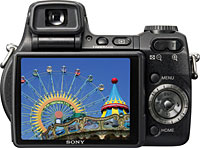 There’s no RAW image capture either, an omission that will surely push keen photographers further in the direction of cut price dSLRs like Nikon’s fine D40
There’s no RAW image capture either, an omission that will surely push keen photographers further in the direction of cut price dSLRs like Nikon’s fine D40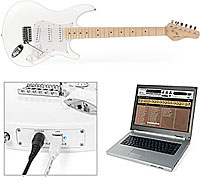 As the name suggests, this Strat-shaped guitar comes with a USB port, allowing aspiring six string warriors to plug into their laptops and access a host of cool effects.
As the name suggests, this Strat-shaped guitar comes with a USB port, allowing aspiring six string warriors to plug into their laptops and access a host of cool effects. There’s also a multi-track recording/editing function for laying down dual-guitar sonic attacks, delicately layered tracks or a Ronnie Spector wall of noise.
There’s also a multi-track recording/editing function for laying down dual-guitar sonic attacks, delicately layered tracks or a Ronnie Spector wall of noise.